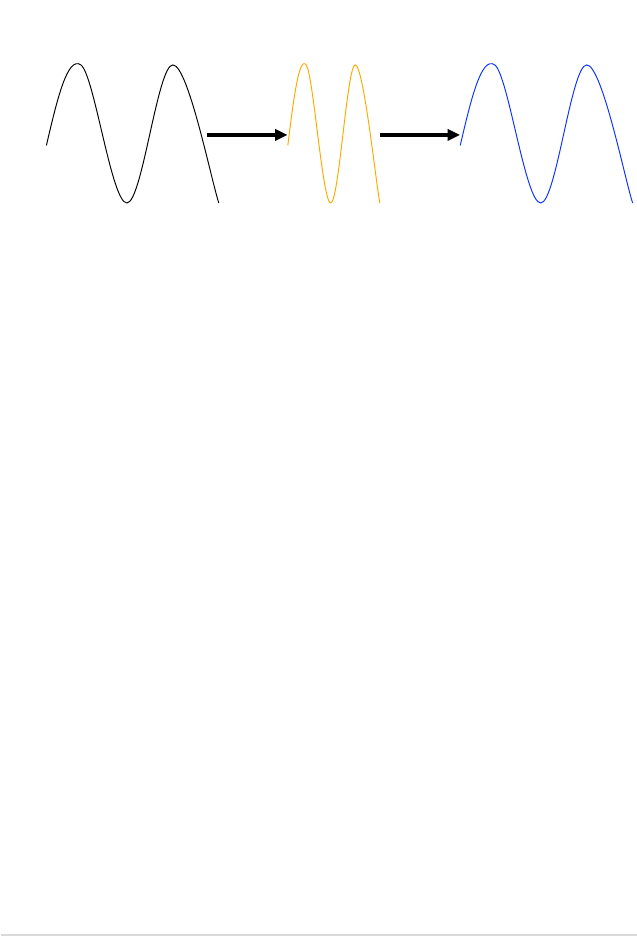
80
ASUS Xonar D2X
the playback speed (2X, only on Windows XP) and record the accelerated analog
signal. PMP will convert the signal back to the normal speed with very high-quality
(118dB SNR), low distortion (-108dB) time-scaling algorithm. ALT technology can
shorten the total conversion process. Please refer to the graph below:
Playback Record
Original
Digital
Data
Converted
Digital Data
2X Analog
Output
Signal
Q8: What's the application of "S/PDIF in loopback"?
Answer:
"SPDIF in loopback" is the process of looping back the sound card's S/PDIF digital
input signal directly to the S/PDIF output. It's useful mainly for two purposes:
• transforming electrical signals from coaxial cable to a ber optical cable, or vice
versa.
• using the PC as a SPDIF bridge (typically as a media center): for example,
connect other devices like DVD players to the Xonar D2X’s S/PDIF input and
then connect its SPDIF output to an AV receiver or decoder. When you would
like to send the player device's audio to the AV receiver, you need to have the
Xonar sound card's "S/PDIF in loopback" enabled to redirect the player's input
signal to output to the AV receiver.
Since "SPDIF In Loopback" is the hardware’s high-delity pass-through path, not
all sound effects will be applied to the signals.
Q9: Will PCM sound output through S/PDIF be just 2 channels even with
different analog output channels?
Answer:
The S/PDIF protocol specication (IEC-60958) can only carry 2-channel PCM
data or non-PCM AC3/DTS data. So, when a user selects PCM output for S/PDIF,
the Xonar sound card will always deliver 2 channel PCM data through the S/PDIF
output port. For attaining 5.1 channel surround sounds, you can select Dolby
Digital Live or DTS Interactive encoding output from the S/PDIF out menu, which
will allow the Xonar D2X to deliver 5.1 surround sound for games, DVD movies,
and even stereo music.


















